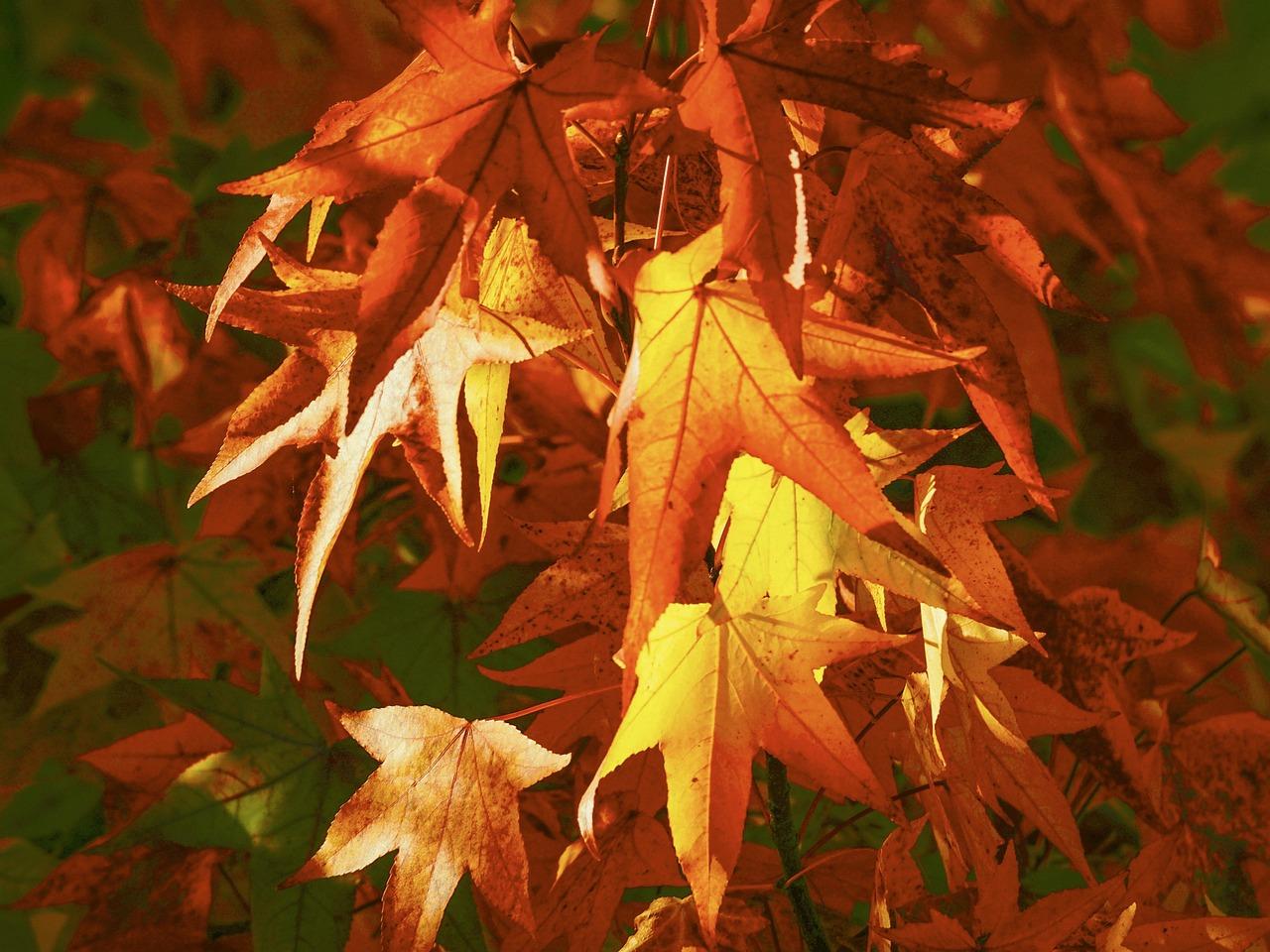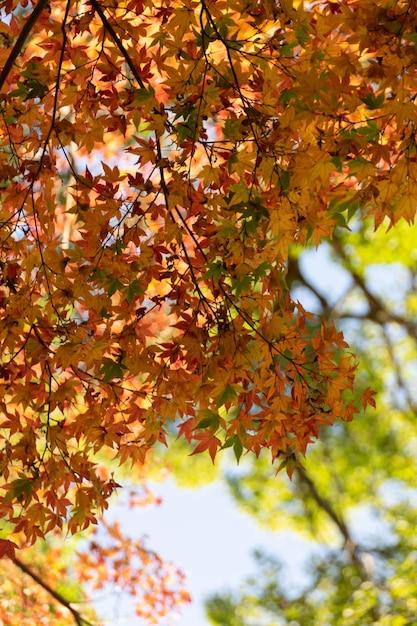Autumn is a magical season filled with vibrant colors and crisp, cool air. As the days grow shorter and the temperature drops, something fascinating happens in nature: the leaves on trees undergo a stunning transformation. What was once a sea of green foliage transforms into a breathtaking display of reds, oranges, yellows, and browns. But have you ever wondered why leaves change color in the first place?
In this blog post, we’ll explore the fascinating science behind this phenomenon specifically designed for KS1 learners. From how fast leaves can change color to what factors determine the specific shades we see, this article will provide all the answers. So let’s dive into the world of autumn leaves and discover the magic behind their seasonal transformation!

Why Do Leaves Change Color in Autumn?
The Science Behind Nature’s Colorful Makeover
Ah, autumn! The season of cozy sweaters, pumpkin spice everything, and, of course, the mesmerizing transformation of tree leaves. Have you ever wondered why leaves change color during this time of the year? Well, my curious little friends, let’s embark on a colorful journey through the science behind this captivating phenomenon.
The Role of Pigments
Chlorophyll: Our adventure begins with the main star of the show, a pigment called chlorophyll. During spring and summer, chlorophyll is the dominant pigment in leaves, giving them their vibrant green hue. It’s like a superhero, heroically harnessing sunlight to convert it into energy through a process called photosynthesis.
Carotenoids: As autumn approaches, chlorophyll decides it’s time for a break and begins to retreat. But fear not, for there is another set of pigments that step up to the plate – carotenoids. These pigments, already present in the leaves, become more visible as the green chlorophyll fades away. Think of them as the understudies waiting for their big moment in the spotlight.
Anthocyanins: Now, my dear friends, get ready for the real showstopper. As the days grow shorter and temperatures cool down, some trees produce a final burst of color by creating a whole new set of pigments called anthocyanins. These red, purple, and blue pigments are responsible for those eye-catching hues that make autumn so enchanting.
The Magic of Light
So, how does all of this pigment play come together to create such a magical spectacle? Well, it’s all about the way light interacts with the leaves. You see, as chlorophyll breaks down and disappears, the green color fades away, allowing the yellows and oranges of the carotenoids to shine through. Meanwhile, the production of anthocyanins adds those stunning reds and purples to the mix.
The Weather Factor
Now, my inquisitive pals, you might be wondering why some autumns are more breathtakingly colorful than others. Well, Mother Nature has a trick up her sleeve. The perfect recipe for awe-inspiring autumn hues includes a dash of bright, sunny days and cool, crisp nights. These ideal conditions prompt trees to produce more sugars and anthocyanins, intensifying their color display.
A Farewell to Leaves
Sadly, the vibrant show must come to an end. As the days grow shorter and the temperature drops, trees gradually seal off the connection between leaves and branches. This causes the leaves to wither and eventually fall to the ground, making room for new growth in the coming spring.
Embrace the Magic of Autumn
So, my curious comrades, the next time you find yourself surrounded by a breathtaking tapestry of autumn colors, remember the science behind this magnificent display. From the mighty chlorophyll to the dazzling anthocyanins, each pigment plays a vital role in creating nature’s grand symphony. Embrace the magic of autumn and let it fill your heart with wonder and awe, year after year.
Tags: autumn leaves, leaf color change, chlorophyll, carotenoids, anthocyanins, photosynthesis, nature’s spectacle, autumn colors, science of autumn, the magic of light, weather and leaf coloration, falling leaves, nature’s symphony

FAQs About Why Leaves Change Color in Autumn (KS1)
How Fast Can Leaves Change Color
Leaves can change color quite quickly in autumn. It’s like they’re updating their wardrobe for the colder weather! Within a few weeks or even days, you’ll start to see the vibrant colors of red, orange, and yellow take over the green of summer. It’s nature’s way of reminding us that change is beautiful.
What Colors Do You Wear in October
Ah, October, the month of pumpkin spice everything and cozy sweaters. When it comes to colors, the shades that dominate October are warm and rich. Think deep oranges, burnt reds, and earthy browns. It’s nature’s way of blending in with the falling leaves and the warm hues of pumpkin patches.
What Are the Winter Colors for 2023
Winter 2023 is all about embracing the coolness and crispness of the season. This year, the trending winter colors are frosty whites, icy blues, and shimmering silvers. They bring a touch of elegance and a sprinkle of magic to the winter landscape. So, think of cozying up with a cup of hot cocoa in a snowy wonderland!
Is Pink a Fall Color in 2023
While pink might not be the typical color you associate with fall, 2023 has decided to break the norms. This year, pink has made its way into the fall color palette. Soft blush pinks and dusty roses are being embraced alongside the traditional autumn hues. So, if you’re feeling rosy, go ahead and rock that pink sweater in the fall!
What Makes Fall Colors Brighter
The secret to making fall colors pop is sunlight! As the days get shorter in autumn, the sunlight becomes less intense. This change in light triggers a chemical reaction in the leaves, causing them to produce brilliant pigments like carotenoids (which create yellow and orange colors) and anthocyanins (which give leaves their red and purple hues). So, the softer sunlight helps the colors shine even brighter!
What Determines Leaf Color in Fall
The color of a leaf in the fall is like a fingerprint; it’s unique for every tree species. Various factors influence leaf color, including pigments and environmental conditions. Chlorophyll, the pigment responsible for the green color in leaves during the growing season, breaks down in autumn, revealing other pigments like carotenoids and anthocyanins. The combination of these pigments and factors like temperature and moisture levels determines the specific colors we see in those breathtaking autumn landscapes.
Is Red a Winter Color
Red, like Santa’s suit and Rudolph’s nose, is often associated with the winter season. Its vivid hue adds a festive touch to the holiday season. While white, blue, and silver are more commonly considered winter colors, adding a touch of red through decorations or clothing can bring warmth and cheer to the cold winter months. So, don’t be afraid to rock some red during those snowy days!
Why Do Leaves Change Color in Autumn KS1
Ah, the leaves changing color in autumn, a true spectacle worth marveling at! In autumn, as the days become shorter and cooler, trees prepare for winter by shutting down their food production systems. During this process, their leaves break down chlorophyll, the green pigment that provides energy through photosynthesis. As the green fades away, other pigments, such as the aforementioned carotenoids and anthocyanins, take center stage, revealing the stunning red, orange, and yellow hues we associate with fall.
Can You Wear Yellow in October
Absolutely! Yellow is like a burst of sunshine, adding vibrancy to any outfit, even in October. The golden tones of yellow perfectly complement the falling leaves, mimicking the warm autumnal ambiance. So, if you’re feeling radiant or want to stand out against the changing landscape, don’t hesitate to incorporate some yellow into your October wardrobe.
Can You Wear Red in Fall
Oh, red in fall… It’s like a bold statement against the backdrop of nature’s changing colors. Red is a classic color that never goes out of style, and fall is no exception. From fiery crimson to deep burgundy, wearing red in autumn adds a touch of drama and warmth to your outfit. So, go ahead and unleash your inner fashionista by embracing the red shades that dominate the fall season!
Now that you have all your burning questions about why leaves change color in autumn answered, it’s time to grab a pumpkin spice latte and take a leisurely fall stroll among nature’s masterpiece. Enjoy the vibrant colors, cozy sweaters, and the wonders that autumn brings!
